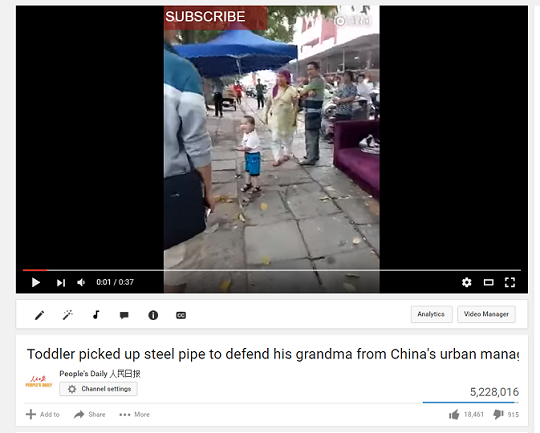


A Su-30 fighter and an H-6K bomber of the Chinese Air Force take part in a drill, Sept. 25, 2016. The Chinese Air Force on Sunday sent more than 40 aircraft of various types to the West Pacific, via the Miyako Strait, for a routine drill on the high seas, a spokesperson said. Bombers and fighters of the PLA Air Force also conducted routine patrol in the East China Sea Air Defense Identification Zone (ADIZ). (Xinhua/Tian Ning)
A Su-30 fighter and an H-6K bomber of the Chinese Air Force take part in a drill, Sept. 25, 2016. The Chinese Air Force on Sunday sent more than 40 aircraft of various types to the West Pacific, via the Miyako Strait, for a routine drill on the high seas, a spokesperson said. Bombers and fighters of the PLA Air Force also conducted routine patrol in the East China Sea Air Defense Identification Zone (ADIZ). (Xinhua/Tian Ning)
BEIJING, Sept. 26 (Xinhua) -- More than three years ago, Xi Jinping, General Secretary of the Communist Party of China (CPC) Central Committee, made improving the army's combat strength a major focus in building a strong army, an idea that has since been the key goal of the military.
At a meeting with national lawmakers from the armed forces on March 11, 2013, Xi, also chairman of the CPC Central Military Commission (CMC), raised the capability to win wars as one of the fundamentals of building a strong army, the others being the command of the Party and having a proper working style.
Over the past three-plus years, the military's day-to-day training, military drills and its overall reform have all targeted honing combat strength.
From 2013 to 2015, the People's Liberation Army (PLA) conducted at least 383 drills of various kinds, and the drills all focused on honing real combat capability.
On Sunday, the Chinese Air Force sent over 40 aircraft of various models to the West Pacific, via the Miyako Strait, for a routine drill to test high-seas real combat capability.
The PLA Army deployed for the first time a full infantry battalion for a United Nations peacekeeping mission in South Sudan in 2015. The PLA Navy has been conducting regular high-seas training missions.
Servicemen and women have also been plunged into non-military operations, including earthquake, flood and other disaster relief and rescue.
The military has been slashing expenditures on unnecessary items so that more funding goes to weaponry, battlefield construction, education and training.
In 2015, 24,934 public vehicles were cut. Administration costs above the corps level were cut by at least half compared to the previous year.
In March 2014, the CMC issued a guidance demanding the level of military training be raised to actual combat standards to improve the army's capabilities.
The guidance, which stressed that strengthening combat readiness should be viewed as a top priority, outlined concepts, principles, major tasks and measures to raise the level of military training.
Following the requirements, the PLA Army has carried out extensive evaluation of its combat capability. The navy has boosted fierceness and complexity of drills.
The Air Force removed restrictions on airspace used in drills and the PLA Rocket Force troops expanded their manoeuvering range and worked on their ability to deter and strike across the entire defense area.
The military has also been correcting irregularities that may render drills and training ineffective. Over the past three-plus years, more than 600 officers have been subject to punishment such as postponed promotion due to not treating drills or training seriously.
On Dec. 31, 2015, China inaugurated the general command for the Army of the People's Liberation Army (PLA), the PLA Rocket Force and the PLA Strategic Support Force. It is part of the overall reform of the PLA's organization.
On Feb. 1, Xi conferred military flags to the five newly established theater commands of the PLA, and demanded the building of a joint battle command system that is "absolutely loyal, resourceful in fighting, efficient in commanding, and courageous and capable of winning wars."
Through the reform, a two-tiered command system, including the CMC and theater commands, was established, a move to help boost the CMC's role in strategic command and better coordinate various services with joint command by five theater commands.
By cutting 300,000 standing troops and streamlining of the multi-layered command system, China's military will optimize its structure and the officer-to-soldier ratio.

 Who Will Fit The Chinese Roles In Game Of Thrones?
Who Will Fit The Chinese Roles In Game Of Thrones? China's Hubei Shennongjia added to World Heritage List
China's Hubei Shennongjia added to World Heritage List Cute Dog At Fruit Stand Becomes Latest Internet Sensation
Cute Dog At Fruit Stand Becomes Latest Internet Sensation Top 10 livable Chinese cities
Top 10 livable Chinese cities The last primitive tribe in China
The last primitive tribe in China China's first intelligent security robot debuts in Chongqing
China's first intelligent security robot debuts in Chongqing A Total of 3,552 Subscribers Vanish In Two Days; YouTube Closes All Doors to Users’ Inquiries
A Total of 3,552 Subscribers Vanish In Two Days; YouTube Closes All Doors to Users’ Inquiries Out of this world! Futuristic UFO-shaped yacht has its own garden and a stunning underwater viewing deck
Out of this world! Futuristic UFO-shaped yacht has its own garden and a stunning underwater viewing deck An old tea house in Chengdu
An old tea house in Chengdu Furious Customer Crushes All the Buns from Vendor Just Because He Was Given the Wrong Flavor
Furious Customer Crushes All the Buns from Vendor Just Because He Was Given the Wrong Flavor